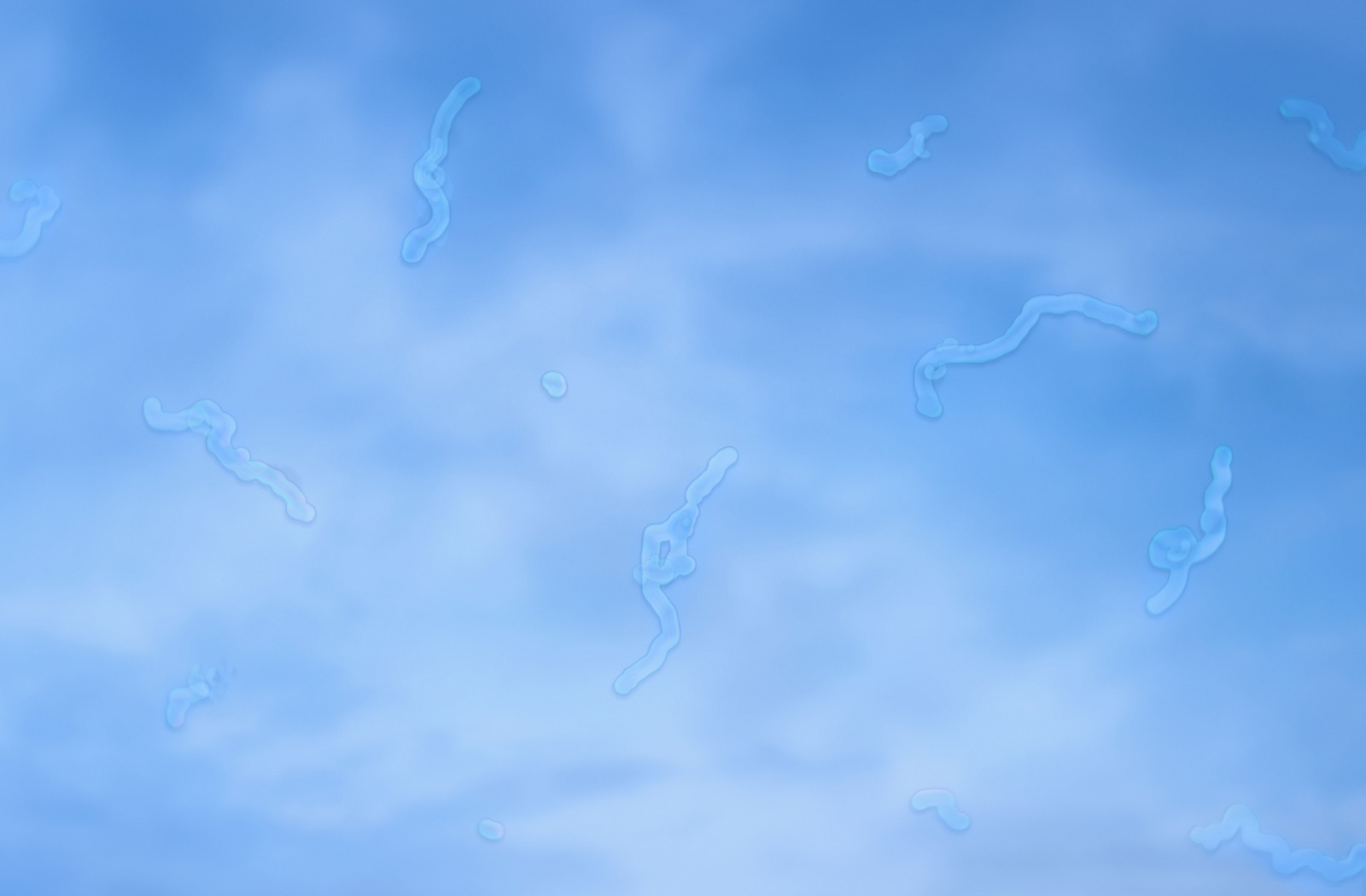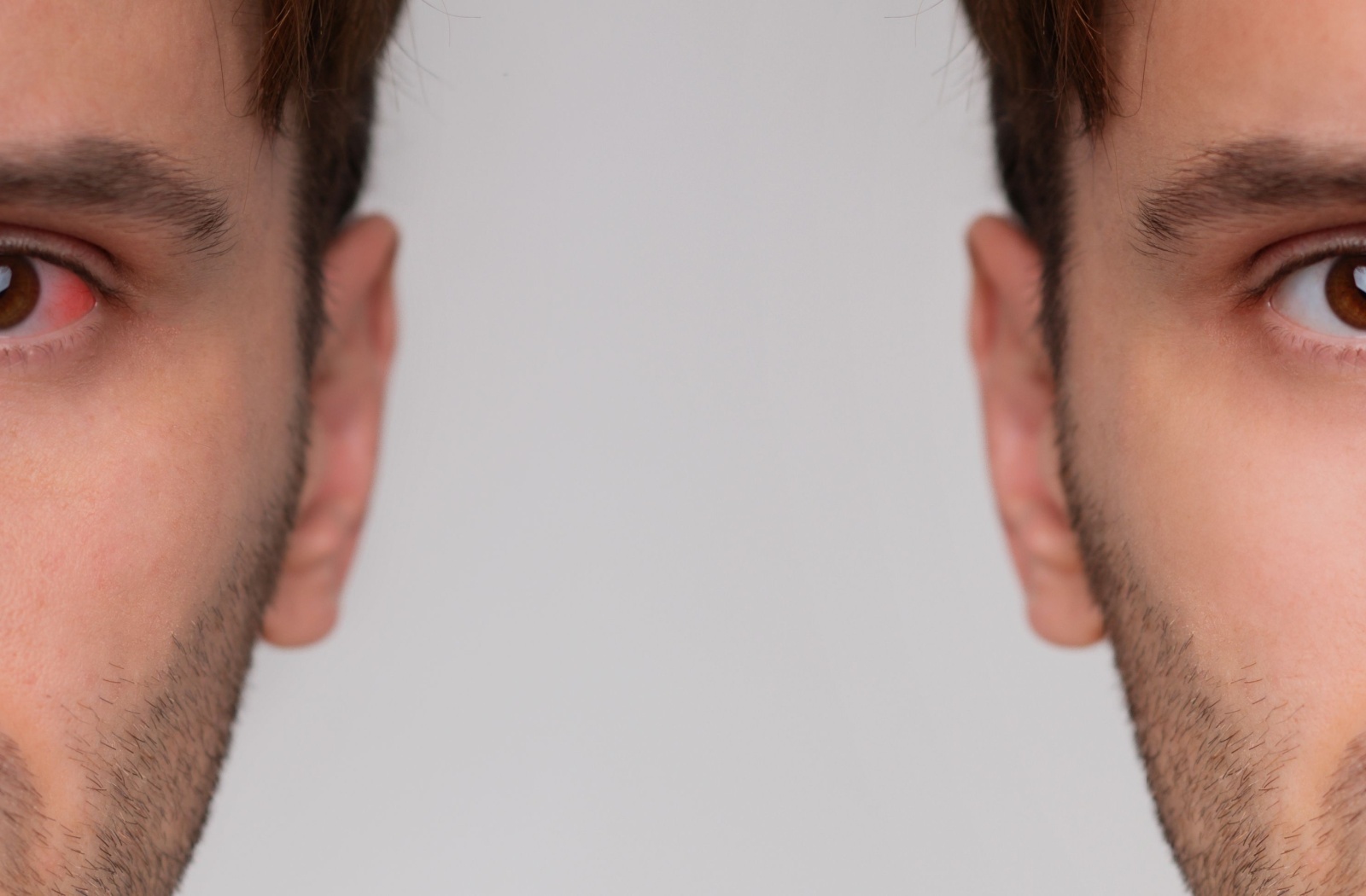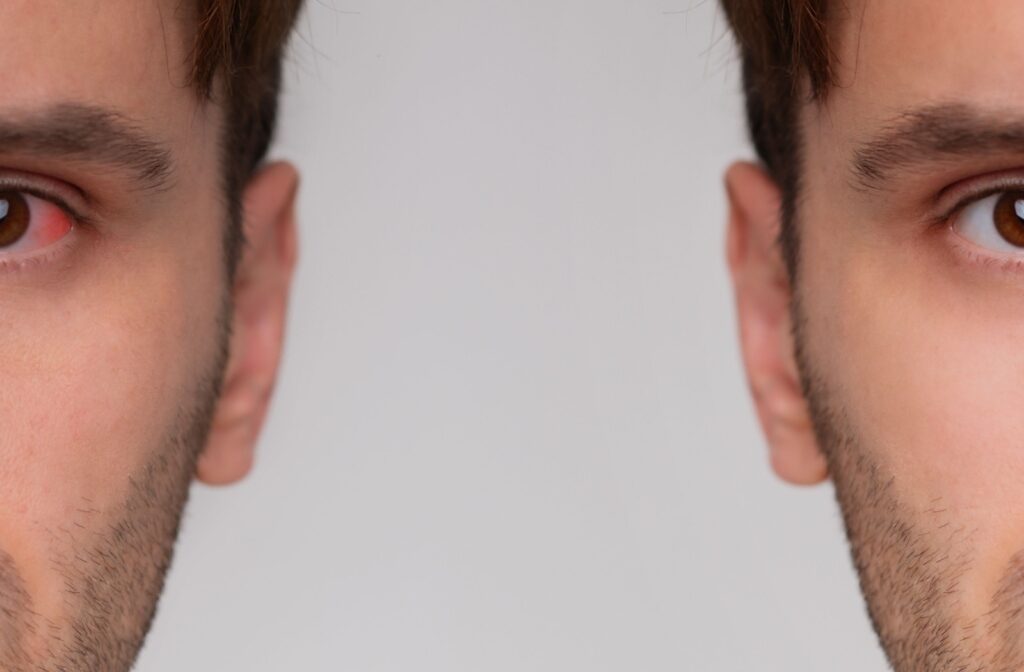When our eyes can’t produce enough tears or those tears are of low quality, we experience dry eyes. While there are a variety of symptoms associated with dry eye, including a gritty, scratchy feeling, floaters are not among these symptoms. Floaters are usually harmless, dark shapes that appear in your vision and look like spots, lines, or cobwebs.
Regular eye exams can help alleviate anxieties surrounding your eye health, but when symptoms do pop up, it can be a bit concerning, especially if you’re experiencing dry eye and floaters.
What is Dry Eye Disease?
You may only think about your tears or their importance to your eye health once you experience dry eyes. Our tears lubricate our eyes, rinse away grit and dirt, keep the surface of our eyes clear and clean, and reduce the risk of damage or infection. Dry eye disease occurs when your eyes can’t produce enough tears or the right kind of tears to keep them lubricated.
Causes of Dry Eye Disease
Anyone can get dry eye. In fact, nearly 20 million people in the United States have dry eyes. There are many reasons why you may be experiencing dry eyes, including:
- Gender: Women are more likely to develop dry eyes due to the fluctuations of hormones during pregnancy, menopause, or if using oral contraceptives.
- Age: Dry eyes are also a natural part of aging, and symptoms related to dry eyes are typical in those over 65.
- Medication: If you are taking certain prescription drugs, such as antidepressants, antihistamines, or blood pressure medications, you may experience dry eye as a symptom of these medications.
- Environment: Your environment may also be responsible for your dry eyes. If you live in a dry, windy, or dusty climate, your tears may evaporate too quickly, leading to dry eye symptoms.
Even spending too much time staring at screens can contribute!
Symptoms of Dry Eye
There are different types of dry eye, but typically symptoms include:
- Dandruff around the eyes
- Light sensitivity
- Watery eyes
- Sore, red, or inflamed eyelids
- Burning or gritty sensation in the eyes
- Contact lens discomfort
- Difficulty opening eyes in the morning
It’s important to recognize these symptoms early to manage the condition effectively, as they can impact daily activities like reading, driving, and even enjoying family time. Your optometrist can properly diagnose dry eyes during an eye exam and provide an effective treatment plan.
What are Floaters?

Floaters are tiny spots or threads that float across your vision, appearing like specks of dust or cobwebs. Floaters are usually harmless, but can be pretty annoying. However, a sudden increase in floaters or the sudden appearance of light flashes could indicate a more severe issue, such as a retinal detachment. In such cases, immediate medical attention is necessary.
Causes of Floaters
Floaters are usually caused by tiny clumps of a protein called collagen inside the vitreous, the clear gel-like substance in your eye. These clumps cast shadows on your retina, creating the appearance of floaters.
In most cases, these clumps appear as a natural part of age-related changes to the eye. However, you may have an increased risk of experiencing floaters if you are nearsighted, have diabetic retinopathy, have had cataract surgery, or have had eye trauma.
Symptoms of Floaters
The primary symptom of floaters is seeing small shapes drifting through your vision. These shapes are especially noticeable when looking at a plain background like a blank wall or the sky. These shapes can come and go and change in shape, size, and quantity.
Because floaters are in your eyes, they move as you move your eyes, making it hard to get a clear look, as they seem to dart away.
Why Do Dry Eyes & Floaters Occur at the Same Time?
While dry eyes don’t cause floaters, it’s not uncommon to experience both conditions simultaneously because of their shared risk factors:
- Certain lifestyle factors like prolonged screen time can exacerbate both conditions
- Dehydration and nutritional deficiencies
- Age
- Diabetes
- Autoimmune diseases
Both dry eye disease and floaters result from changes in eye composition. Dry eyes may lead to an imbalance in the tear film, while floaters result from changes in the vitreous.
Treating Dry Eye & Floaters
Managing these conditions requires a multifaceted approach. Treating one condition can alleviate the symptoms of the other. For example, managing dry eyes can reduce the severity of floaters.
Home Remedies for Dry Eyes
Simple changes like using a humidifier, taking breaks from screens, and applying warm compresses can relieve dry eyes. Over-the-counter artificial tears can also help.
For persistent dry eye symptoms, consult an eye care professional. They may recommend prescription eye drops, lifestyle changes, or even minor procedures to help your eyes produce more natural tears.
Managing Floaters
Floaters generally don’t require treatment unless they significantly impact your vision. In severe cases, a vitrectomy can remove and replace the vitreous gel with a saline solution.
The Eye Avenue believes that the best eye care service comes from understanding our patients’ holistic needs, including any anxieties you may have about your eye symptoms. Contact us today to book a comprehensive eye exam and put your worries about dry eyes to rest.




